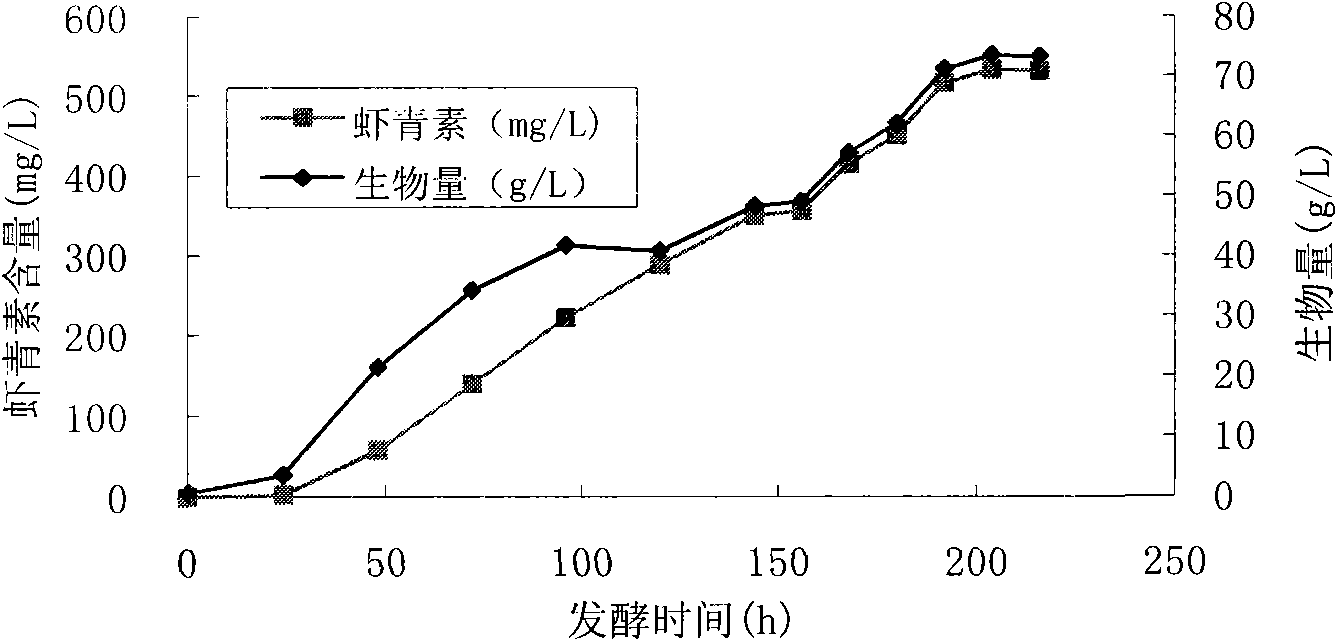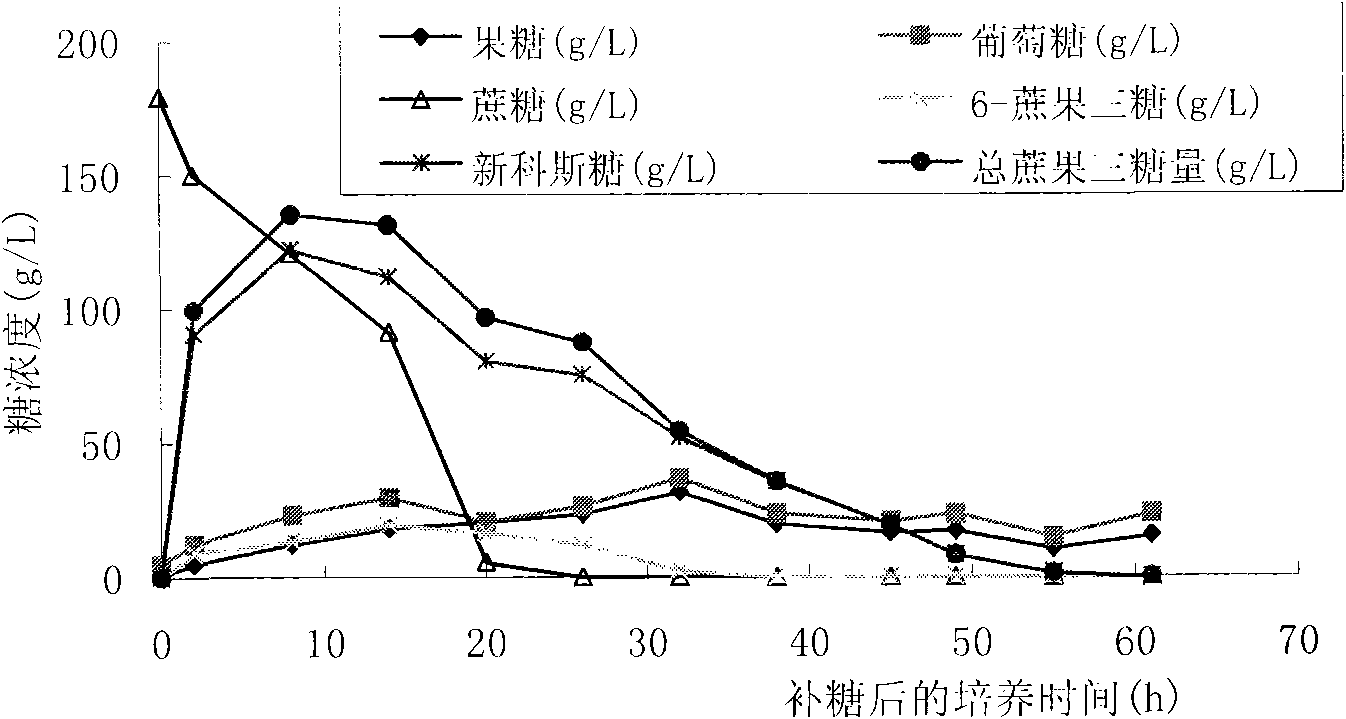Fermentation method of co-production of astaxanthin and Fructooligosaccharide
A fructooligosaccharide and fermentation method technology, applied in the field of biomedicine, can solve the problems of not being able to produce astaxanthin and fructooligosaccharide at the same time, low content of astaxanthin, low concentration of culture medium, etc. The effect of widening and reducing production cost
- Summary
- Abstract
- Description
- Claims
- Application Information
AI Technical Summary
Problems solved by technology
Method used
Image
Examples
Embodiment 1
[0019] (1) The medium composition is: glucose 1%, yeast extract 1%, ammonium sulfate 1.5%, disodium hydrogen phosphate 0.1%, potassium dihydrogen phosphate 0.1%, magnesium sulfate 0.1%, calcium chloride 0.04%, water 96.16% .
[0020] (2) Calculation and weighing of cultured ingredients: Take the fermentation in a 10-ton tank as an example, and the initial fermentation volume is 4m 3 Then the initial culture of the preparation fermentation needs: glucose = 1% × 1000L / m 3 ×4m 3 ×1000g / L=40kg, yeast extract=1%×1000L / m 3 ×4m 3 ×1000g / L=40kg, (NH 4 ) 2 SO 4 =1.5%×1000L / m 3 ×4m 3 ×1000g / L=60kg, Na 2 HPO 4 =0.1%×1000L / m 3 ×4m 3 ×1000g / L=4kg, KH 2 PO 4 =0.1%×1000L / m 3 ×4m 3 ×1000g / L=4kg, MgSO 4 =0.1%×1000L / m 3 ×4m 3 ×1000g / L=4kg, CaCl 2 =0.04%×1000L / m 3 ×4m 3 ×1000g / L=1.6kg, water=96.16%×1000L / m 3 ×4m 3 ×1000g / L=3966.4kg.
[0021] (3) Preparation and sterilization of the initial medium: weigh the above ingredients and mix them evenly, add water 3.7m 3 Mix eve...
Embodiment 2
[0026] (1) The medium components are: glucose 3%, yeast extract 2.5%, ammonium sulfate 2.4%, disodium hydrogen phosphate 0.4%, potassium dihydrogen phosphate 0.4%, magnesium sulfate 0.2%, calcium chloride 0.08%, water 91.02% .
[0027] (2) The weighing, preparation, sterilization, inoculation and fermentation process control of the culture medium are the same as in Example 1.
[0028] (3) Feeding: the operation of feeding is the same as in Example 1. When the feeding ends, the fermentation broth consumes 240g / L of sugar in total, the concentration of bacteria is 65g / L, and astaxanthin is 630mg / L.
Embodiment 3
[0030] (1) The medium composition is: glucose 2%, yeast extract 1.75%, ammonium sulfate 1.95%, disodium hydrogen phosphate 0.25%, potassium dihydrogen phosphate 0.25%, magnesium sulfate 0.15%, calcium chloride 0.06%, water 93.59% .
[0031] (2) The weighing, preparation, sterilization, inoculation and fermentation process control of the culture medium are the same as in Example 1.
[0032] (3) Feeding: The operation of feeding is the same as that of Example 1. When the feeding ends, the fermentation broth consumes a total of 240 g / L of sugar and the amount of bacteria is 75 g / L, and astaxanthin is 690 mg / L.
PUM
 Login to View More
Login to View More Abstract
Description
Claims
Application Information
 Login to View More
Login to View More - R&D
- Intellectual Property
- Life Sciences
- Materials
- Tech Scout
- Unparalleled Data Quality
- Higher Quality Content
- 60% Fewer Hallucinations
Browse by: Latest US Patents, China's latest patents, Technical Efficacy Thesaurus, Application Domain, Technology Topic, Popular Technical Reports.
© 2025 PatSnap. All rights reserved.Legal|Privacy policy|Modern Slavery Act Transparency Statement|Sitemap|About US| Contact US: help@patsnap.com


